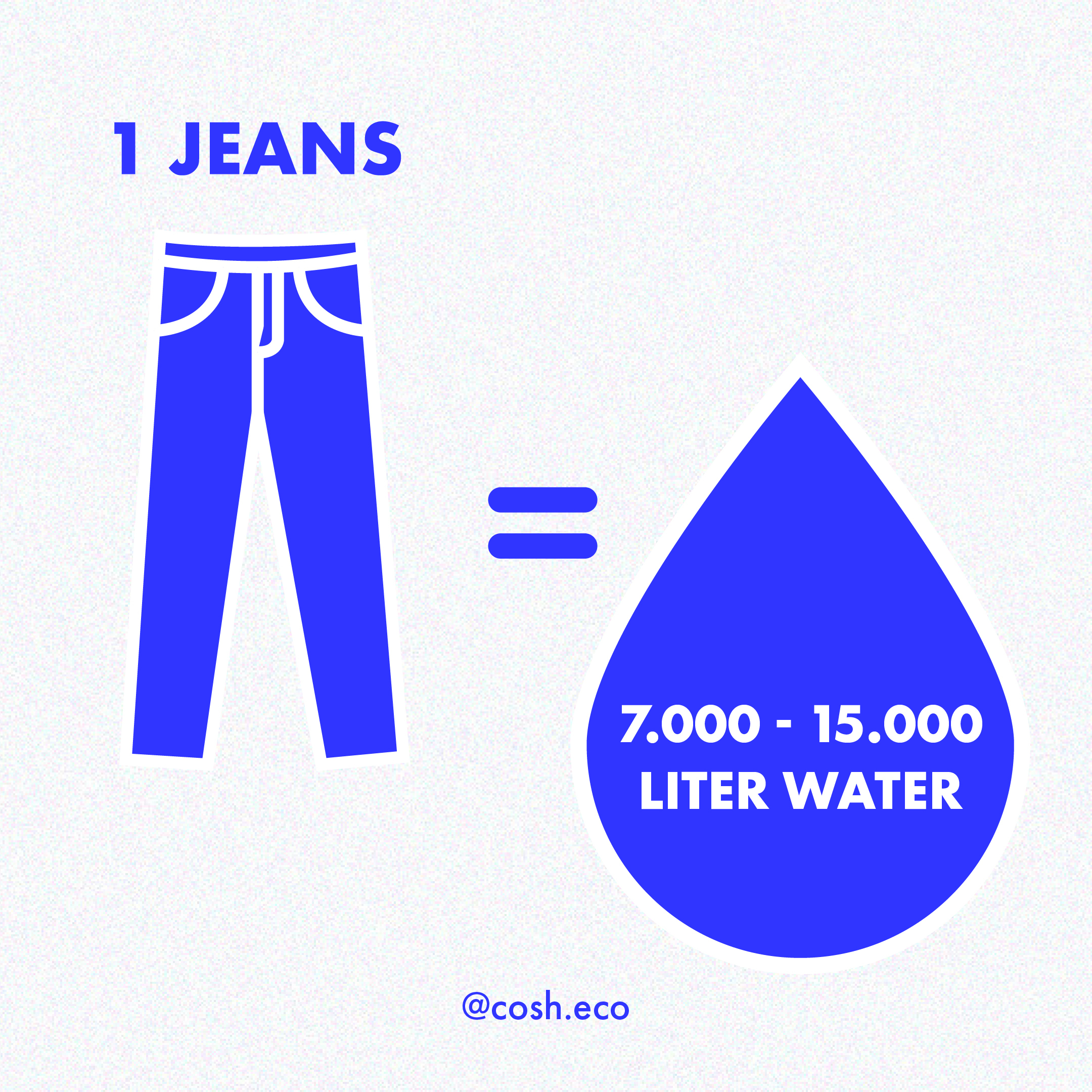
6 November 2025
Sunlight and colour: the hidden drivers of microfiber pollution in the ocean
- Plastics
Cotton plays an important role in the textile industry worldwide. A lot has been written about textiles’ impact on the environment, but what does this actually look like? What is the impact of cotton production on humankind and the environment? And can cotton be sustainable? COSH! looked into this for you.

Cotton is a plant, it is one of the most water consuming crops in the world and has an enormous impact. Producing just one pair of jeans requires between 7.000 and 15.000 litres of water. According to Niki de Schryver, this is equivalent to 40 years of drinking water for one person. Today we see that many countries that produce cotton, such as China, India, the US, Pakistan and Turkey, are facing water shortages.
Moreover, farmers are using a lot of damaging pesticides and defoliants on their cotton plants. These substances are poisonous and cause damage to human beings, newborns, animals and the environment.

Cotton production is responsible for 16% of all insecticide usage and 6% of all pesticide usage worldwide. These chemicals are used to strengthen the crops and protect them from insects, fungi or weeds.
By using these chemicals, the cotton harvests will be much higher in the first years, compared to organic cotton which does not use these chemicals. The downside, however, is that these artificial chemicals are made of by-products from the oil-industry and are responsible for many greenhouse gasses.
On top of this, chemicals also harm the quality of our soil. This means that after a few years, the cotton harvests will stagnate because the ground is unhealthy. Farmers are then forced to continue to use chemicals and to guarantee larger harvests. We estimate that cotton production uses 200.000 tons of pesticides and 8 million tons of fertilisers. (Source: Ellen McArthur Foundation).
Although certain dangerous pesticides are forbidden (such as mirex, endosulfan and dichlorodiphenyltrichloroethane (DDT)) worldwide by the Treaty of Stockholm, many of these pesticides are still used in certain countries.
That’s why cotton produced outside of the European Union that does not carry an Oeko-Tex or GOTS certificate could have residues of these chemicals. Thankfully, all textiles produced in the EU must comply with the EU’s REACH regulation, which protects consumers from hazardous chemicals. Read about the chemicals used in dyeing processes here, and which labels can help you avoid harmful chemicals here.
Cotton not only has a big impact on the environment, but also on a large group of people. The cotton production industry is in itself responsible for almost 7% of all employment opportunities. (Source: Ellen McArthur Foundation). It’s therefore an important industry. Unfortunately, the production often takes place in inhumane conditions.
Slavey and exposure to dangerous situations and substances feature heavily. Moreover, farmers are not paid fairly for their cotton. Taking into account the societal and environmental costs, the true cost of cotton production today in India is 3,65 euro per kg, 7 times more than the current market price. (Source: Ellen Mcarthur Foundation). The real cost to workers and the planet is not taken into account here.

Cotton is produced in over 65 countries, among which the top 10 countries in terms of volume are Brasil, China, Pakistan, India, the USA, Burkina Faso, Australia, Ivory Coast, Cameron and Turkey.
The growing demand for land for food production could stop the expansion of land-intensive cotton and wool farming in the future. That’s why it’s important to manage cotton harvesting in a sustainable way.
But what exactly does sustainable farming mean? First of all, it is important to avoid harmful pesticides. This will keep the ground healthy and keep bioversity intact – in a natural and rich environment, insects and fungi are automatically kept under control by their natural predators.
Another important feature is drip irrigation, which can reduce water use by 20% and is better for the plants themselves by only watering their roots.
Sustainable cotton production has many advantages. It results in higher quality crops and means the ground absorbs more CO2, thus slowing down climate change.
Switching to sustainable cotton production is also better for farmers because pesticides are expensive. In Africa, the cost of pesticides accounts for 60% of the total production cost!
Over the years there has been an enormous improvement in cotton production, but the transition to sustainable cotton is still too slow… Only 1% of cotton worldwide is organic. The cotton industry still faces a lot of challenges to shift to sustainable cotton production.
Do we all need to stop buying cotton? Of course not! We can choose responsible or eco-friendly and organic cotton. Unsure where to find this? Don’t panic. Over the coming weeks, we will be telling you all about sustainable cotton and how to recognise it. This way, you can make the most conscious and most sustainable choice. Do you want to know the advantages of organic cotton? Read this post!
Are you impatient and looking urgently for a new t‑shirt or pyjamas made out of organic cotton? Use the COSH! shopping guide to discover which brands use organic cotton and whether they’re available in shops in your neighbourhood. Conscious shopping has never been easier!
Read also: The advantages of organic cotton

6 November 2025

29 October 2025

20 October 2025